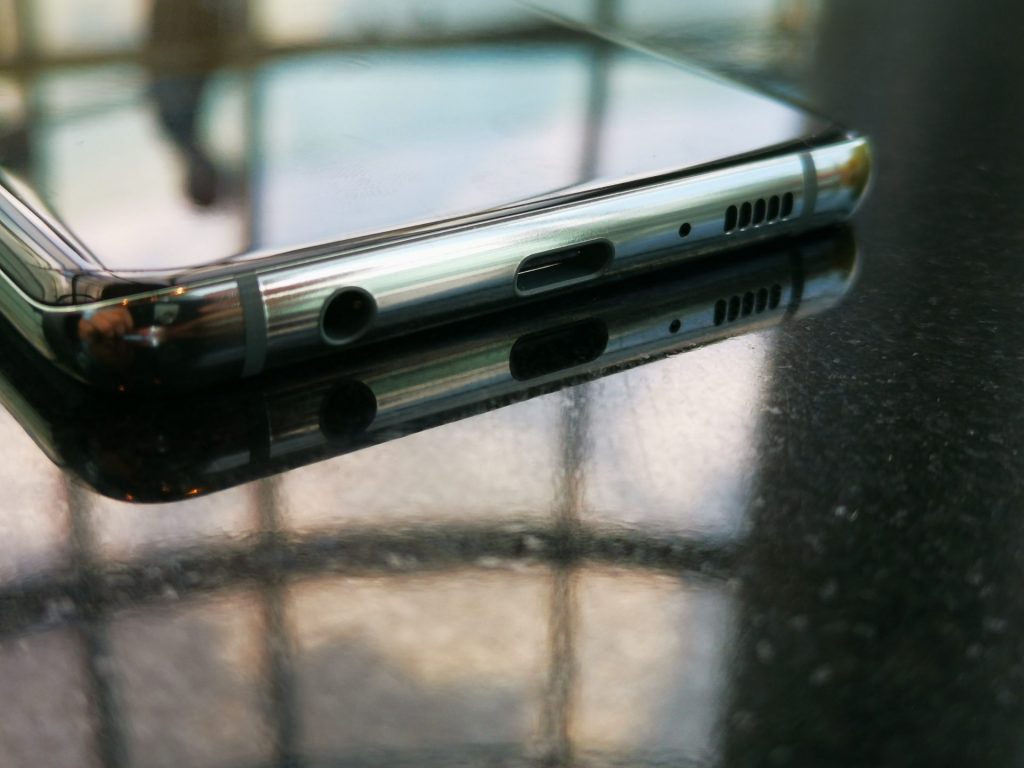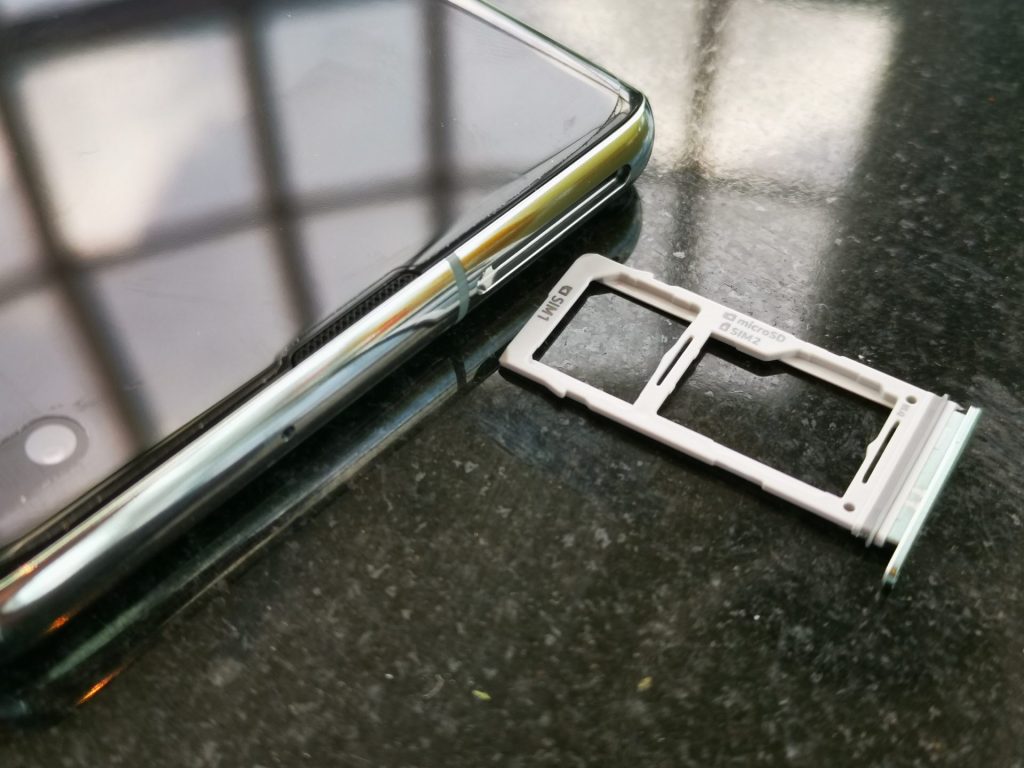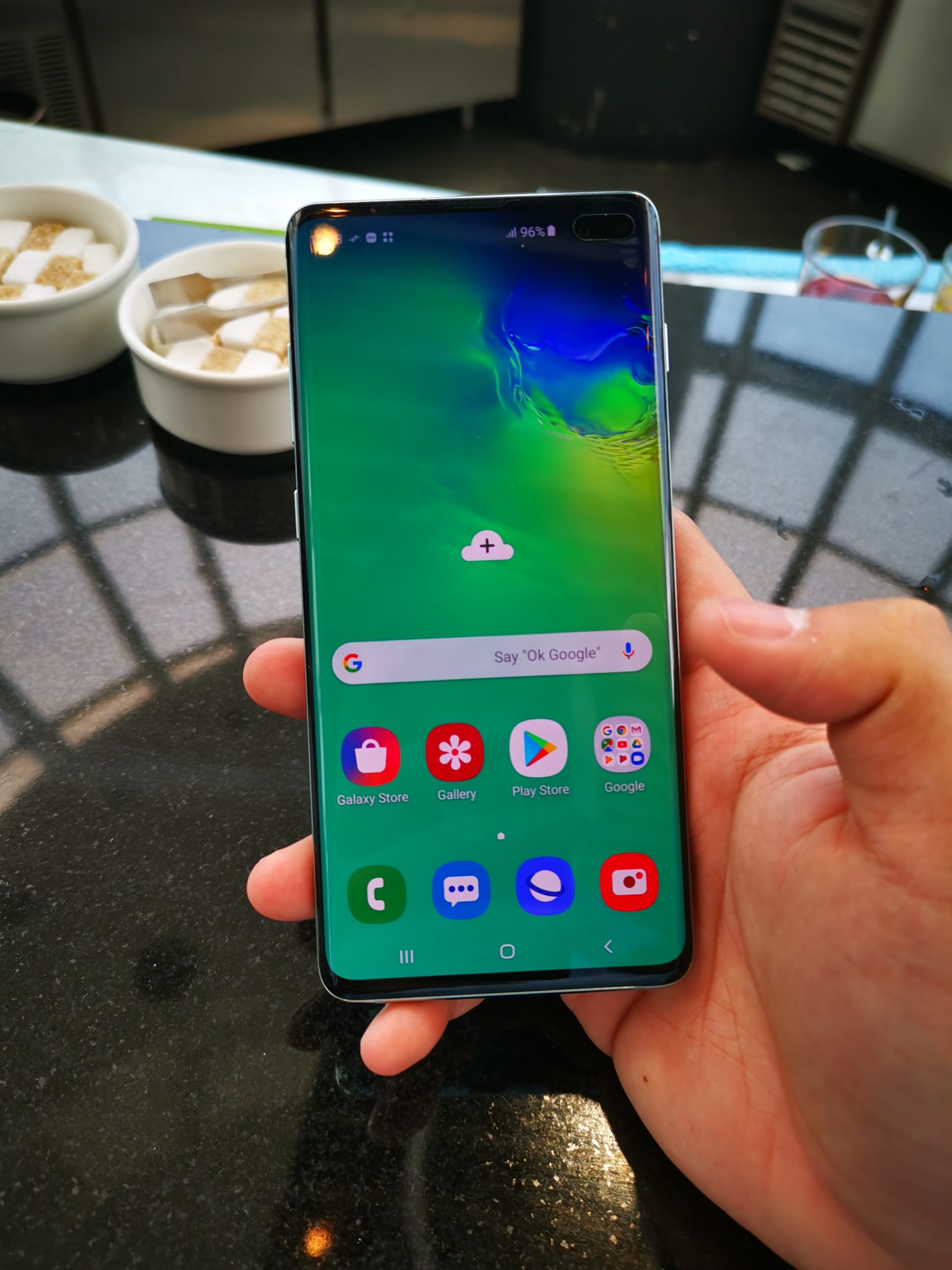Yesterday, Samsung revealed their latest flagship Galaxy S10 series for this year. While there were some upgrades to its hardware and specifications, was it able to keep up with other flagship smartphones by other brands? In this article, we are going to take a closer look at what the new Samsung Galaxy S10+ offers, and compare it with the 4-month-old Huawei Mate 20 Pro. Which smartphone is better? Let’s compare these two smartphones in 10 rounds of fierce comparison battles. FIGHT!
Round 1 : Processing Power

The Samsung Galaxy S10+ is one of the first few smartphones in the market with the new Qualcomm Snapdragon 855. As initial benchmark scores come online, we are certain that the Snapdragon 855 will be the highest performing mobile chipset in the market in this half of the year. Based on the Galaxy S10+ benchmark tests done by Hot Hardware, the Qualcomm Snapdragon 855 CPU was able to dominate competition, and was quite a bit ahead of Huawei Mate 20 Pro’s Kirin 980 chipset in both processing and 2D/3D benchmarks.
Moreover, even in AI based benchmarks (dated 5th Feb 2019) which Huawei has focused quite a bit on for their smartphone features, the Snapdragon 855 was able to come up on top with the introduction of the dedicated Neural Processing Unit. Perhaps, this is how Qualcomm has taken advantage of the Huawei, being the first-mover, in order to further improve on their silicon technology. This round goes to the S10+.
| Samsung Galaxy S10+ | Huawei Mate 20 Pro |
| 1 | 0 |
Round 2 : Cellular and Wireless Connectivity
Huawei being a leader in cellular equipment and telecom infrastructure should be able to gain an edge over Samsung in this area. Even though the Samsung Galaxy S10+ supports Dual SIM functions via a hybrid SIM slot, each SIM can only handle a single call at a time. It may seem that we are overly picky in these edge case comparisons, but these are required for flagship devices. On the other hand, the Huawei Mate 20 Pro offers the dual-VoLTE technology with its dual-SIM feature. It allows users to pick up calls on both SIMs at the same time.
While Huawei may have the advantage in cellular technology, the Huawei Mate 20 Pro lost out in its Wi-Fi technology. Samsung Galaxy S10 series features the new 802.11AX Wi-Fi 6 standard, which allows Wi-Fi speeds that is about 20% faster than the current standards. This also means that the Samsung Galaxy S10+ is likely to be more future proof, by supporting features that will become mainstream in the near future.
In this round, both phones have their own pros and cons. This results in a tie.
| Samsung Galaxy S10+ | Huawei Mate 20 Pro |
| 2 | 1 |
Round 3 : Battery Capacity and Charging
The Samsung Galaxy S10+ features a 4,100mAh battery capacity, while the Huawei Mate 20 Pro has one with 4,200 mAh. While the Huawei Mate 20 Pro edges ahead in this area, the real difference its charging technology. Huawei supports 40W SuperCharge, while the Samsung only can do its Adaptive Fast Charging at 20W. Essentially, it could likely take quite a bit of time to charge up the Galaxy S10+. Oddly enough, even the Galaxy S10+’s wireless charging capabilities could be even be as fast as it’s wired charging system. This looks like a flaw in its design, and is a real no-no for a flagship device. We’ve got to give it to the Huawei Mate 20 Pro for this round.
| Samsung Galaxy S10+ | Huawei Mate 20 Pro |
| 2 | 2 |
Round 4 : Fingerprint Technology
Samsung gotten rid of the standalone fingerprint sensor that is found on the back of the device. Instead, they integrated the world’s first in-display ultrasonic fingerprint sensor within the smartphone. We’ve used ultrasonic fingerprint sensor previously, when it was introduced in the Xiaomi Mi 5s. Nothing much of the technology has changes, other that it now being placed under a display.
Based on our experience on the Samsung Galaxy S10+, the ultrasonic fingerprint sensor is still not as responsive as the dedicated fingerprint sensor. While it can be cool to have a in-screen fingerprint sensor, it would rather be pointless if it does not perform as well as previous solutions. Moreover, due to the limitation ultrasonic fingerprint recognition technology, we won’t be able to apply thicker screen protectors, such as tempered glass on the Galaxy S10+. Regardless, there are still some benefits, as this technology is said to be more accurate, and can detect fingerprints even when the screen is wet.
On the other hand, the Huawei Mate 20 Pro uses an in-display optical fingerprint sensor. Every time the fingerprint is captured, the display will have to light up brightly at a specific spot on the screen in order to read the fingerprint. Based on personal experiences, the optical sensor seems to still to perform slightly faster than the ultrasonic sensor.
So in the end, a fingerprint sensor must be able to do its job well. In this case, the Huawei Mate 20 Pro did a better job than the Galaxy S10+. The winner of this round will be awarded to the Huawei Mate 20 Pro.
| Samsung Galaxy S10+ | Huawei Mate 20 Pro |
| 2 | 3 |
Round 5 : 3.5 mm Audio Jack

It’s a simple comparison. The Samsung Galaxy S10+ comes with a 3.5mm audio jack, while the Huawei Mate 20 Pro does not. The former wins this round.
| Samsung Galaxy S10+ | Huawei Mate 20 Pro |
| 3 | 3 |
Round 6 : Design
The Samsung Galaxy S10+ has quite a dated design for their smartphones, causing the S10+ still look fairly similar to the S8 and S9 series. The Huawei Mate 20 Pro looks differentiated with a unique gradient and Twilight design, adding a certain sophisticated factor to the smartphone. This also makes the Huawei Mate 20 Pro look premium, something worthy of a flagship device. However, do take note that this could largely be a personal preference.
| Samsung Galaxy S10+ | Huawei Mate 20 Pro |
| 3 | 4 |
Round 7 : Display
The Samsung Galaxy S10+ comes with a 6.4″ Quad HD+ Dynamic AMOLED, while the Huawei Mate 20 Pro uses a 6.39″ 2K+ Flexible AMOLED. By comparing these two displays, the Huawei Mate 20 pro seems to lose out quite a bit with a lower screen resolution. Moreover, its notched design is also considered dated, unlike the pill shaped hole on the Samsung Galaxy S10+ which is a lot less intrusive while maximizing the screen to body ratio.
| Samsung Galaxy S10+ | Huawei Mate 20 Pro |
| 4 | 4 |
Round 8 : Camera Performance
The news came in today that both the Samsung Galaxy S10+’s camera system scored the same score as the Huawei Mate 20 Pro on DXOMARK (109). Here are some of the sample photos on both phones for comparison. In our opinion, the inclusion of a wide-angle lens on both smartphones is great. It should be a requirement for all flagship smartphones.
The samples show us that both smartphones are indeed impressive. Both cameras are able to vividly capture the color tones, and produced images that were very clear. We just aren’t sure which is better, because they were both superbly capable. It’s in tie in this round.
| Samsung Galaxy S10+ | Huawei Mate 20 Pro |
| 5 | 5 |
Round 9: Usability
When we go into the details and focus on human centered designed and usability of the smartphone, we can see how these two smartphones are different. Huawei placed proper thoughts into many aspects of their smartphone, and was able to create a smooth user experience. As compared to Samsung, it just seems that they didn’t bother about usability at all. There are two jarring problems with the Galaxy S10+.
Firstly, the power button found on the right side of the device is placed too high. When the smartphone is in your hand, it would almost be impossible to press the power button without fidgeting with the phone. Secondly, the fingerprint sensor is placed too low on the smartphone. We will have the move our thumb to an awkwardly low position in order to reach the fingerprint sensor. The Huawei Mate 20 Pro did not have these issues. The power button is located near to the middle of the right edge of the phone, and the fingerprint sensor is placed to the higher end of the bottom half of the screen.
Huawei Mate 20 Pro wins in this one.
| Samsung Galaxy S10+ | Huawei Mate 20 Pro |
| 5 | 6 |
Round 10: Storage and Expansion Support

The Samsung Galaxy S10+ comes with state-of-the-art storage technology. They have utilized the new UFS 3.0, which allows read and write speeds on the internal storage memory to be much faster than the previous technologies. The Huawei Mate 20 Pro lacks in this, as it still uses the UFS 2.1 standard. Moreover, the Samsung Galaxy S10+ also supports an MicroSD expansion slot, which allows the smartphone to potentially take up even more storage space. Come to think of it, the Huawei Mate 20 Pro also supports a proprietary Nano Memory (NM) storage cards as well, but the S10+’s solution is more elegant. It’s obvious that we will get it to the S10+ in this round.
| Samsung Galaxy S10+ | Huawei Mate 20 Pro |
| 6 | 6 |
Conclusion
We did not know that the comparison would end up in such a close fight. Both smartphones were worthy to be named as flagships, and both had their good and bad factors. It will be a very difficult decision for us to make, which also means that consumers will find it even harder. Rather for this comparison article to be inconclusive, here are our recommendations.
If you are someone who just looks a specifications and performance, and prefer a device that is newer, go for the Samsung Galaxy S10+. However, if you want an all-rounder that is much more usable and sensible, the clear answer should be the Huawei Mate 20 Pro.
Local Pricing and Availability
The Galaxy S10e, S10 and S10+ will be available in Singapore from 8 March 2019, at local telecommunication operators (M1, Singtel and StarHub), major consumer electronics & IT stores, Samsung Experience Stores and Lazada Singapore. The respective recommended retail prices for the devices are as follows:
| Model | Built-in Memory | RRP (S$) |
| Galaxy S10e | 128GB | $1,078 |
| Galaxy S10 | 128GB | $1,298 |
| Galaxy S10+ | 128GB | $1,398 |
| Galaxy S10+ | 512GB | $1,798 |
| Galaxy S10+ | 1TB | $2,198 |
The Galaxy S10e, S10 and S10+ (128GB1) will be available in Prism White, Prism Black and Prism Green. The Galaxy S10+ (512GB and 1TB) will be available in Ceramic White and Ceramic Black. Pre-Order/ Registration of interest for the Galaxy S10 (128GB) and Galaxy S10+ (128GB, 512GB, 1TB) will commence from 22 February 2019, Friday, 12pm.

























